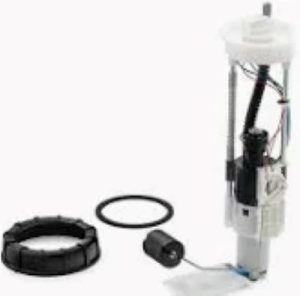Fuel Pump efficiencyThe higher theFUEL PUMP PERFORMANCE, the key here is not to worry about a lot of power and torque, but by ensuring proper maintenance, optimization with high quality parts is your best defense. Best Fuel Pump Efficiency — To keep a long clean fuel system plays an vital role in its efficiency. Replacing the fuel filter every 20,000 to 30,000 miles can keep the pump from being overworked by clogs that reduce efficiency. A dirty fuel km4 filter can decrease fuel pressure by 20% and make engine run poorly or even waste gas.
Applying to the Fuel Pump sufficient voltage is one other leading component. Most electric Fuel Pumps draw power from the battery and alternator, and a drop in voltage can ultimately lead to lower pump efficiency. As an example, the typical Fuel Pump requires 12 volts for optimum operation. Shift the transmission into PARK and run the engine at approximately 2000 RPM. A jet pump operating below 10 volts may have only marginal pressure capacity, and thus provide an inefficient fuel delivery. By inspecting the vehicle's electrical system, such as battery and alternator, Fuel Pump is one of the parts of car components that can work at full capacity.
The fuel pump also includes the efficiency of using good quality fuel. Accompanied by dirty, water-tainted or excess ethanol fuel can corrode pump internal parts and reduce performance. Unlike most pump fuels, which contain ethanol normally in a concentration of 10%, pure ethanol and blends with concentrations higher than 10% will attract collect water from the atmosphere causing rust and wear inside the engine. This reduces pump life and efficiency up to 30% over time. The use of high-grade gasoline without ethanol is good for the Fuel Pump and will improve its performance.
However, upgrading to an aftermarket Fuel Pump could simply enhance performance even further. Performance pumps are built to pump fuel more efficiently (turbocharged engines or racing applications require a little extra help when it comes to getting fuel where it needs to be as fast as possible). In addition, many of these pumps offer a higher flow rate and pressure to meet the fuel demands of anything from light street use through full competition running. A regular high-performance Fuel Pump will offer 100 psi while the standard pumps are in the 60-80 psi range, so when it comes to high-powered engines, better fuel atomization and combustion is provided.

Ford launched enhanced Fuel Pump for its EcoBoost engines Last year, significantly enhancing capacity by 15% efficient fuel delivery. The addition was in line with Ford's push for similar high-performance vehicle upgrades that improved fuel efficiency and reduced greenhouse gas emissions.
Cleaning the fuel tank regularly to minimize fuel tank sediment can also still keep Fuel Pump efficient. As time goes on, debris and contaminants collect at the bottom of the tank which can then obstruct your pump and reduce its output. This helps to ensure that the pump receives a cleaner fuel supply which is occupied due to this cleaning of the tank every after 50,000 miles.
To quote automotive pioneer Henry Ford, "Quality means doing it right when no one is looking." That is true for keeping in good order a Fuel Pump, right as if you care about the right things, it will be effective and will last longer.
For the optimal results, the equipment must be maintained regularly and updated whenever needed. Installing a new high-performance Fuel Pump, fresh fuel, and good spark will keep the fuel delivery to your engine flowing in full force.